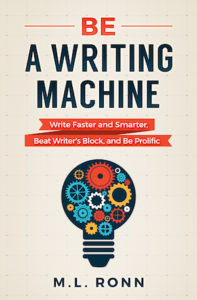First things first, folks, there’s a power hour on Saturday. Be there or be a rhombus!!!
Second, some updates on my AI editing progress.
As many of you know, I am exploring two potential ways to use the power of GPT-3 (and soon 4) to edit my books for typos. It’s a surprisingly good proofreader, and it won’t mess with your author voice if you structure your prompts correctly. Unlike Grammarly, which will try to rewrite sentences for you, this will catch just typos. And it catches about 50% of the same errors that Grammarly does, with the other 50% being things that Grammarly cannot currently catch.
However, I am attacking this problem from two angles to see which one works in case one fails.
The first path is Google Docs. Turns out you can write a script in Google Apps Script that can call the OpenAI API. This will send back edited text and put it right into Google Docs. Naturally, this is super easy and most people could do it. Just open Google Docs, paste in your text, and click a button.
The only problem with Google Docs is that it doesn’t seem to handle long passages well. We’re still exploring if there is a way around this. Unfortunately, I don’t have any news on the Google front yet. The code is still doing some really weird things with the word counts, resulting in exorbitant charges (OpenAI is not free). I’m assuming that this route will be a failure, but I won’t have official confirmation for another couple of days.
The second path is through Word and Python. By using Python, I can send an entire Word doc through the API without having to worry about limitations.
I have some great news about the second path. Folks, I am currently looking at a successful Python script that not only sends an entire Word doc through the OpenAI API, but it also EDITS the text and does not result in excessive API charges.
I sent around 10,000 words of test text through it this evening in tests of about 500 words each. GPT-3 fixed tons of typos.
OK, here’s the plot twist. The Python script I told you about? ChatGPT wrote it…
It wrote the whole thing. I asked it to write me a Python script and then I asked a bunch of follow-up questions to see what was possible. I then asked ChatGPT to revise the code until it gave me a Python script that analyze a Word document, passed the text through the API, passed the output text into a new Word doc, preserved all formatting, and then placed it into the same directory as the original file. ChatGPT even walked me through how to install Python on my computer and how to run the script because I had never done it before.
All of this took me about 45 minutes to do. And I didn’t write a single line of code.
If I can do it, that means any of you reading this can do it.
Anyway, I continued my experiments and sent a single 25,000 word document through it. It took approximately 20 minutes, which is about 1,250 words processed per minute. The result was pretty awful. All hell broke loose and GPT-3 did all sorts of weird and crazy things with the text. It didn’t work well at all.
No matter how I experimented, I encountered problems with bigger text chunks. It was quite disappointing, but I learned a valuable lesson: GPT-3’s text model actually isn’t a very good editor.
ChatGPT however, is. If I run text through GPT-3’s Davinci (most capable model) and also through ChatGPT, ChatGPT blows it out of the water. It’s not even a contest. Therefore, the enhancements the OpenAI team made to ChatGPT (technically GPT-3.5) constitutes a major leap forward with editing capabilities.
What all of this means:
- ChatGPT is the one to watch. It will be introduced to the OpenAI API any day now. Could be as soon as tomorrow.
- GPT-4 is also coming as soon as tomorrow. Some have speculated that it will be here by end of Q1 2023.
Those are both two very viable and exciting options that require just a few keystrokes to update my Python script. Seriously, it will just take me seconds to start using the new capabilities. While my tests today were disappointing, this is still very encouraging. Come June, we could be in a new galaxy.
This entire experiment cost me about $3.50. I paid $3.50 worth of tuition to learn everything one can learn about this API, and boy was it worth the money. To say that I learned a lot is an understatement. Plus, I picked up some new skills that will serve me well in the future.
But for now, I have ChatGPT. I also have my programmer working on a more sophisticated Python app that will do everything I can do today but give me a graphical interface and better reliability.
It’s a crazy time to be alive. Everything is changing and evolving so rapidly, it makes your head spin. But as to the question of, “Can I create an application that uses AI to proofread my text?”, the answer is YES, it’s easy, it’s fast, it’s cheap, and we’re right on the cusp of something really spectacular.
Have a good night.

